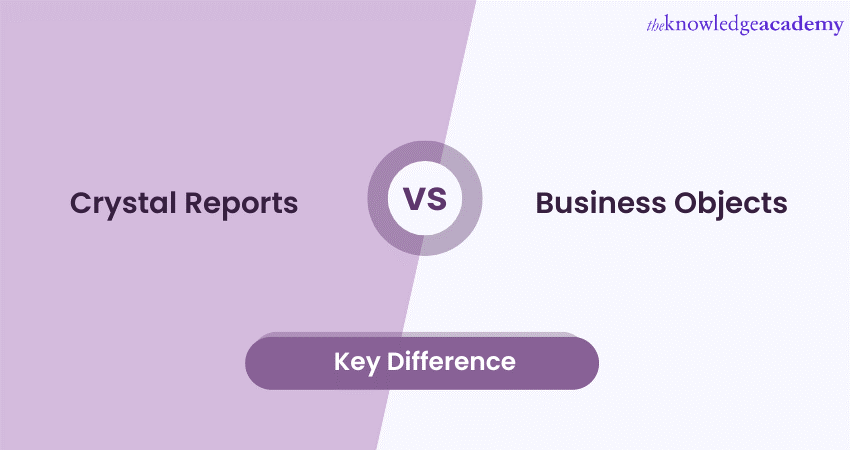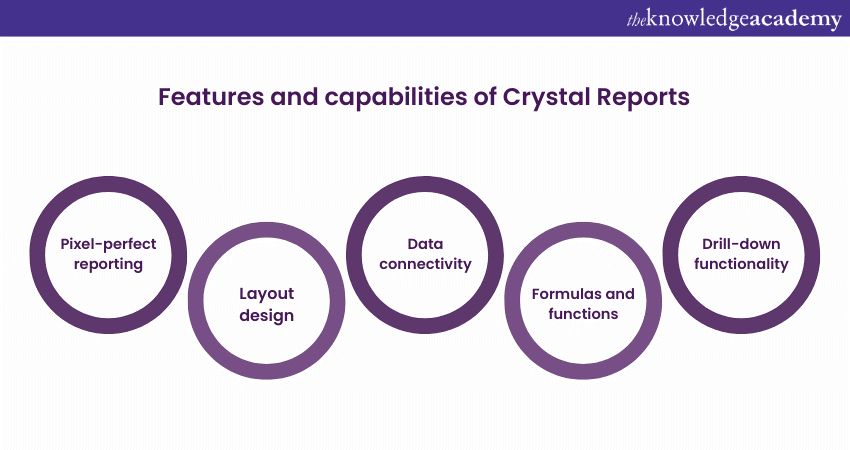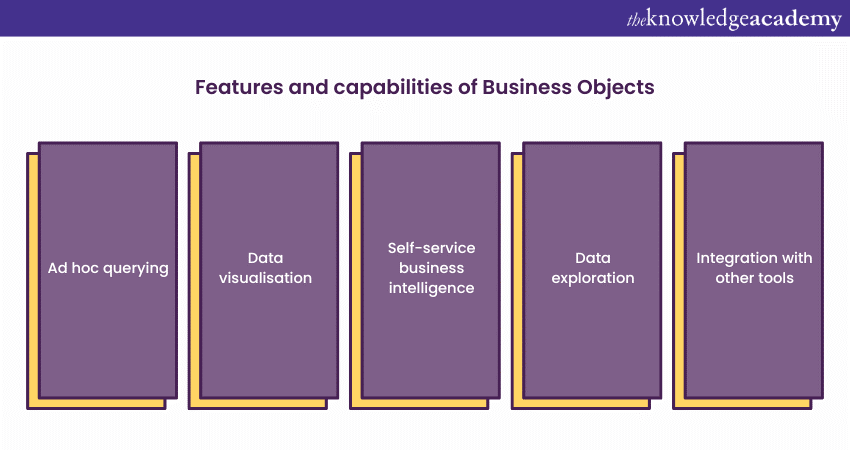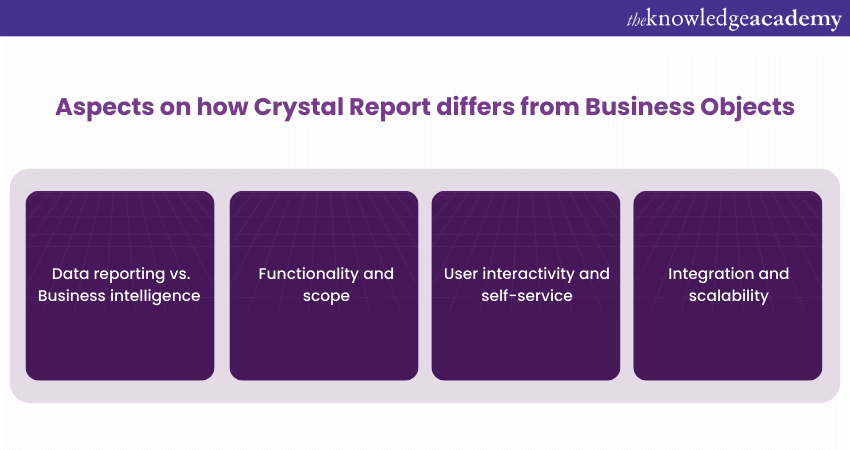We may not have the course you’re looking for. If you enquire or give us a call on +91 8037244591 and speak to our training experts, we may still be able to help with your training requirements.
Training Outcomes Within Your Budget!
We ensure quality, budget-alignment, and timely delivery by our expert instructors.
- Quick Powerful Graphics with Power View, PowerPivot, Power Query, Power Map and Power BI M55164
- Microsoft Power BI for End Users 55400AC
- Retired : Designing and Implementing Enterprise-Scale Analytics Solutions Using Microsoft Azure and Microsoft Power BI DP500
- Microsoft Power BI Data Analyst PL300
- Microsoft BI Training

In data-driven decision-making, the preference between Crystal Reports and Business Objects carries significant weight. These two SAP offerings present distinct avenues for transforming raw data into actionable insights. As we explore the differences between Crystal Reports and Business Objects, we unveil their unique capabilities and examine their relevance in diverse business contexts.
The Crystal Reports is rocking business software applications. It derives data from a wide range of sources to make a report. If your organisation anticipates growth and requires seamless integration with other systems, Business Objects offers the advantage. Explore our blog to understand Crystal Reports Vs Business Objects to choose the best for your organisation.
Table of Contents
1) Brief overview of Crystal Reports and Business Objects
2) What are Crystal Reports?
3) What are Business Objects?
4) Crystal Reports Vs Business Objects: Key differences
5) Choosing the right tool for your needs
6) Conclusion
Brief overview of Crystal Reports and Business Objects
Tools like Crystal Reports and Business Objects have emerged as crucial players, assisting organisations in transforming raw data into actionable insights. While both are developed by SAP and serve the purpose of reporting and analysis, they cater to distinct needs within the spectrum of data-driven decision-making.
Crystal Reports: It has established itself as a stalwart in report generation. Designed with a laser focus on creating formatted and visually appealing reports, Crystal Reports empowers users to transform data into tangible documents that convey information with precision and clarity. Whether it's creating invoices, financial statements, or client contracts, Crystal Reports shines in presenting data in a pixel-perfect manner.
The tool's strength lies in its layout design capabilities, enabling users to meticulously arrange charts, tables, images, and text boxes to create a cohesive visual representation. Crystal Reports boasts extensive compatibility with various data sources, from databases to spreadsheets, ensuring users can seamlessly integrate data from different systems into a single report. Additionally, including formulas and functions allows users to manipulate and transform data to suit their reporting needs.
Streamline Your Workflow: Schedule Reports in Business Objects Now!
Business Objects, in contrast, takes the concept of reporting to a whole new level by offering a comprehensive suite of business intelligence tools. Business Objects is not just about presenting data; it's about enabling data-driven decision-making through Data Visualisation, exploration, and analysis.
At the core of Business Objects lies its capability for ad hoc querying, allowing users to query and explore data without predefined report structures. This empowers Business Analysts and decision-makers to uncover insights from data on the fly, promoting a more agile approach to analysis.
Data Visualisation is a forte of Business Objects, offering an array of interactive charts, graphs, and dashboards that facilitate the comprehension of complex data trends. Unlike Crystal Reports, Business Objects encourages self-service BI, enabling business users to create reports and explore data without heavy reliance on IT departments.
Ready to elevate your Business Objects expertise to new heights? Explore our comprehensive Business Intelligence Reporting and gain the skills you need to master report scheduling, Data Visualisation, and Business Intelligence strategies.
What are Crystal Reports?
Crystal Report is a venerable titan renowned for transforming raw data into elegantly crafted, pixel-perfect reports. As an essential tool for organisations across industries, Crystal Reports has become a go-to solution for creating pieces that demand meticulous formatting and precision.

Crystal Reports excels in creating reports with impeccable formatting and layout precision. This capability is especially crucial for documents such as invoices, purchase orders, and financial statements, where the integrity of data representation is paramount.
The tool empowers users to design reports with unparalleled control over the arrangement of elements. Charts, tables, images, and text boxes can be positioned precisely, allowing users to achieve a visual representation that aligns precisely with their vision.
Crystal Reports offers extensive compatibility with diverse data sources. Whether the data resides in databases, spreadsheets, or other sources, Crystal Reports enables users to pull data from multiple systems into a coherent report effortlessly.
Users can leverage custom calculations, formulas, and functions to manipulate and transform data. This flexibility allows for integrating complex logic and measures within the reports.
While Crystal Reports is primarily designed for static reports, it does offer some interactivity through drill-down functionality. This lets users explore summarised data in greater detail, facilitating a deeper understanding of the information presented.
Understand Business Report Objectives – Boost Decision-Making Today!
What are Business Objects?
Business Objects emerges as a comprehensive suite of tools that goes beyond traditional data reporting. It empowers organisations to harness the full potential of their data by providing a versatile set of capabilities that range from data exploration to interactive visualisation.

Business Objects' core lies in their ability to facilitate ad hoc querying. Users can explore and query data without predefined report structures, enabling them to extract insights from data dynamically and agilely.
Business Objects offers rich Data Visualisation tools, including interactive charts, graphs, and dashboards—these visual representations aid in understanding complex data trends and patterns briefly.
One of the standout features of Business Objects is its focus on self-service BI. It empowers business users to create reports and perform Data Analysis without extensive technical expertise. This democratises data access and promotes agility in decision-making.
Beyond static reporting, Business Objects encourages data exploration. Users can delve deep into data sets, uncovering hidden relationships, patterns, and anomalies that may not be apparent through traditional reporting.
Business Objects seamlessly integrate with other SAP products as well as third-party applications. This integration enhances its scalability and adaptability, making it suitable for organisations with complex data ecosystems.
Embark on your journey towards Business Objects mastery with our exclusive Business Objects Reporting and elevate your skills and become proficient in harnessing the power of Business Objects for insightful reporting and decision-making.
Crystal Reports Vs Business Objects: Key differences
Crystal Reports and Business Objects, both products of SAP, serve distinct purposes within the realm of Data reporting and Business intelligence. Understanding the significant differences between these two tools is essential for selecting the one that aligns best with an organisation's specific needs.

Data reporting vs. Business intelligence
Crystal Reports primarily focuses on Data reporting and document generation. Its core strength is creating formatted, pixel-perfect reports for documents like invoices, contracts, and financial statements. Crystal Reports excels at producing static reports with impeccable formatting, making it a suitable choice for scenarios where maintaining a specific layout is critical.
In contrast, Business Objects encompass a broader spectrum of Business intelligence capabilities. Beyond reporting, Business Objects offers data exploration, ad hoc querying, and interactive dashboards. It empowers users to generate reports, analyse data trends, discover insights, and make data-driven decisions.
Business Objects targets users who require dynamic, real-time insights and the ability to explore data freely.
What is Business Objects Reporting? Find Out Everything You Need to Know!
Functionality and scope
Crystal Reports is designed to create highly formatted and structured reports focusing on layout design. Its capabilities are centred around precisely positioning elements like charts, tables, and text boxes. While it does offer limited interactivity through drill-down functionality, Crystal Reports is primarily geared towards generating well-structured documents.
Business Objects offers a broader range of functionality. It enables ad hoc querying, Data Visualisation, interactive dashboards, and self-service BI. This comprehensive approach allows users to create reports and explore data, uncover insights, and gain a deeper understanding of business trends.
Discover the Best Business Objects Reporting Tools for Your Organization!
User interactivity and self-service
Crystal Reports offers limited interactivity beyond drill-down functionality. Users can navigate through summarised data to explore more detailed information. However, modifications to reports often require IT involvement, making it less suitable for users seeking greater autonomy in report creation and analysis.
Business Objects is designed to promote self-service BI. It empowers business users to create reports, perform ad hoc analyses, and interact with data meaningfully. This feature is valuable for organisations that want to decentralise data access and encourage users to engage directly with data for decision-making.
Learn the Differences: Crystal Reports or Business Objects – Make an Informed Choice!
Integration and scalability
Crystal Reports primarily stands alone as a tool for report generation and printing. While it supports various data sources, it emphasises creating formatted documents rather than integrating with other systems.
Business Objects, on the other hand, excel in integration and scalability. It seamlessly integrates with other SAP products and third-party applications, providing a cohesive solution for organisations with diverse data ecosystems. This integration capability ensures that Business Objects can adapt to the evolving data needs of a growing organisation.
Choosing the right tool for your needs
Choosing between Crystal Reports and Business Objects is critical, as it shapes how your organisation interacts with data, generates insights, and makes informed decisions. Each tool brings its unique strengths to the table, catering to Data reporting and Business intelligence aspects.
Crystal Reports shines when the focus is on creating precise, well-formatted documents. Crystal Reports is a natural choice if your organisation frequently generates documents like invoices, contracts, and financial statements that demand pixel-perfect layouts. It's best suited for scenarios where maintaining a consistent visual representation is crucial.
If your business requires more than static reporting, where interactivity, data exploration, and self-service BI are essential, Business Objects is the tool to consider. Business Objects empowers business users to engage with data, uncover insights, and make data-driven decisions independently. It's precious when your organisation needs dynamic dashboards, ad hoc querying, and the ability to explore data trends.
Learn the Differences: Crystal Reports or Business Objects – Make an Informed Choice!
Assess the technical expertise of your user base. Crystal Reports is better suited for users who require limited interaction and are comfortable with structured reporting. If your organisation consists of Business Analysts, decision-makers, or users who seek to explore and analyse data independently, Business Objects' self-service capabilities become invaluable.
Consider the complexity of your data sets. If your organisation deals with diverse and intricate data, requiring in-depth analysis to uncover patterns and trends, Business Objects provides the necessary tools for data exploration. Its Data Visualisation and exploration features help users make sense of complex data structures.
Conclusion
The divergence between Crystal Reports Vs Business Objects becomes evident in the complicated domain of data reporting and business intelligence. While Crystal Reports excels in crafting precise reports, Business Objects unleashes the power of dynamic exploration and self-service BI.
The decision hinges on an organisation's reporting needs, user profiles, data complexity, and scalability aspirations. By making an informed choice, businesses can leverage the strengths of these tools to amplify data utilisation, foster interactivity, and drive strategic growth.
Streamline Your Workflow: Schedule Reports in Business Objects Now!







 Top Rated Course
Top Rated Course




 If you wish to make any changes to your course, please
If you wish to make any changes to your course, please


